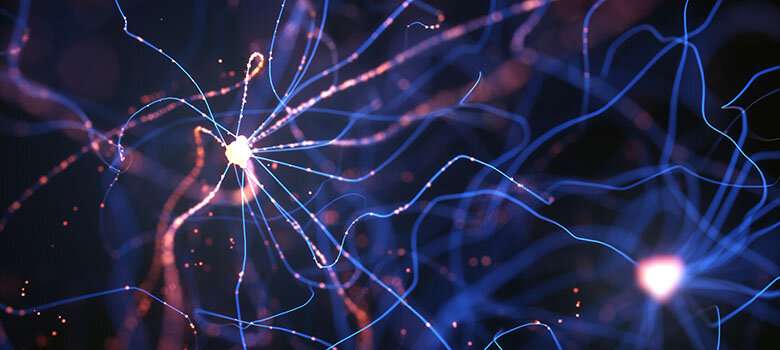Study shows cell's cytoskeleton does more than hold up a cell, it transfers energy

Dysfunctions and malformations in the scaffold of a cell are thought to contribute to heart muscle weakness, neurodegenerative disease and even deafness. Now biophysics research at The University of Texas at San Antonio (UTSA) has taken a closer look at a cell's cytoskeleton and found a new purpose: It aids in energy transfer and information processing within neurons.
Marcelo Marucho, an associate professor in the UTSA Department of Physics and Astronomy, studies, in particular, the cytoskeleton's actin filaments and microtubules for the past 4 years. He works to track how the transfer of energy along these structures impacts cellular function.
The research proposes that structural changes in the filaments (mutations) and alteration in the biological fluids break down the equilibrium and competition between the molecular mechanisms that dominate the bundling and transmission properties of cytoskeleton filaments in normal conditions. This, in turn, yields impaired assembly and defective electric signal propagation along these filaments leading to cellular pathology.
Age and hereditary factors are known to contribute to the development of diseases, however Marucho's research provides insight into how the cytoskeleton's electrical properties contribute to the degradation of a cell.
"There is evidence that filaments conduct electricity, like an electrical cord," said Marucho, who combines both biology and physics to understand what he calls the bionanowire—a cell's electrical cable. "The filaments, F-Actin and microtubules, are able to propagate electrical impulses inside neurons. This property is something that scientists generally haven't considered."
The cell's cytoskeleton, or filaments, are responsible for a cell's shape. They also organize cellular parts and impact a cell's movement and division. But Marucho believes that cells cytoskeleton filaments are also capable of conducting electrical energy.
The UTSA researcher developed multi-scale models with patch clamp and light scattering experiments to determine how electricity spreads and how it affects the mechanical properties of filaments. These preliminary results will help him better understand the normal conditions that allow the cell's bionanowire to develop.
"We also want to elucidate how the pH solution, salts including amount and type, generate the correct healthy formation of cytoskeleton structures," said Marucho. "Biological fluid is a necessary medium to mediate the interactions between cytoskeleton filaments."
Provided by University of Texas at San Antonio




















